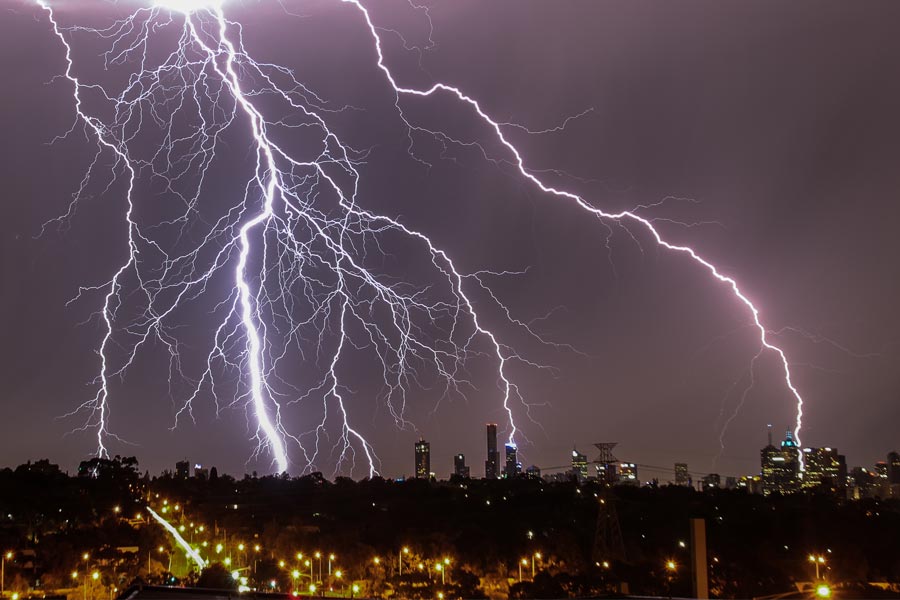October 10, 2018
Lightning Strikes

You cannot prevent lightning from striking, but you can take steps to minimize the damage it can cause.
Deaths by lightning in 2018 are down so far from the average (18 fatalities vs. 49 on average). But lightning is the leading cause of injury and death from natural disaster other than floods. However, even though most people struck by lightning survive, they often suffer from a variety of long-term, debilitating symptoms.
In terms of physical damage, a Carnegie-Mellon study found that lightning affected 33 percent of US businesses at some point. So, what can you do to protect your people and property from lightning?
Insurance industry sources estimate that between 3 and 7 percent of all property/casualty claims are related to lightning strikes in any given year. Between 2007 and 2011, lightning caused an average of 22,600 fires per year, according to an analysis by the National Fire Protection Association. Most of these fires occurred outdoors, but 7 percent occurred in non-residential structures. These fires caused an average of $108 million in direct property damage each year.
When you consider lightning’s power, the damage it causes comes as no surprise. Lightning travels more than 90,000 miles per second and exceeds 50,000 degrees F. A single bolt of lightning has an average of 20,000 amps of electricity — enough to power a lightbulb for three months. When this incredible force hits earth, it can cause one of the following types of damage:
- Impact, fire, singeing or melting: When lightning hits an object or building directly, the force can break or damage the object. For example, lightning is the single leading cause of damage to church steeples. Since a lightning bolt is narrow, however, the actual point of impact often suffers little noticeable damage.
Lightning’s intense heat causes many other problems for property owners. Lightning is the single leading cause of fires in lumberyards. When lightning hits a combustible surface, such as a shake roof, it can spark a fire.
- Electrical injection: When lightning hits a building, the building’s wiring (electrical, telephone or data) can pick up part of the current. This extra current can damage electrical and equipment connected to the system.
- Power surges: Lightning can also enter a building indirectly, through wiring, cables or plumbing or when it hits surrounding ground. In rural areas in particular, lightning can travel through wires for long distances. According to Dr. Ronald B. Standler, a physicist who studies lightning and consults on lightning safety, “The electromagnetic fields from the current in a lightning stroke can induce currents and voltage in wire and cables inside a building. Such surge currents are typically less intense than direct injection of current, but can easily vaporize integrated circuits in computers, modems, electronic control circuits, etc.”
Risk Management
You cannot prevent lightning from striking, but you can take steps to minimize the damage it can cause.
- Ensure your building complies with updated building codes, which require installation of air terminals (or lightning rods), wires and plumbing to be grounded and other measures designed to divert the force of lightning strikes.
- Where possible, use dedicated circuits for computers, building monitoring systems and other delicate electronics so they do not have to share circuits with power-hungry devices, such as air conditioners.
- Protect computers and electronics by plugging these devices into surge protectors instead of directly into the power socket.
- Check surge protectors at least once a year. Most have a signal light that indicates the unit is working.
- During a thunderstorm, turn off computers and unplug the power cord. Unplug your modem, network or cable connection to prevent a surge from entering your computer through these wires.
Insurance Considerations
Even the basic commercial property policy includes coverage for lightning damage. If a lightning bolt hit your building and caused a fire, your policy would cover the claim. However, standard commercial property policies provide lower limits for computers and electronic equipment and do not cover electronic data losses. You can buy a coverage extension that will provide up to $2,500 in coverage —but most businesses will need additional coverage. For more information on insuring computers and data, please contact us.
